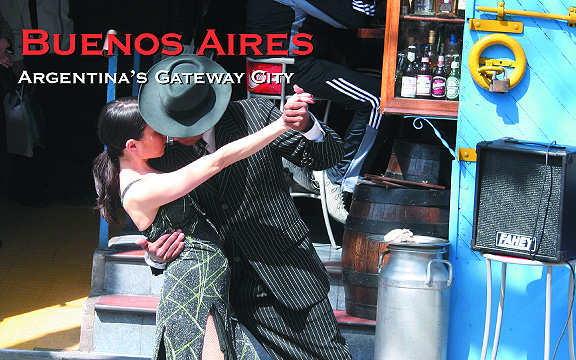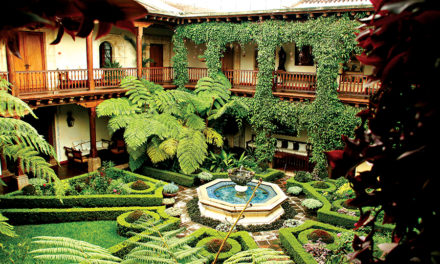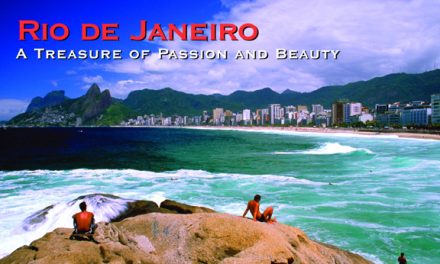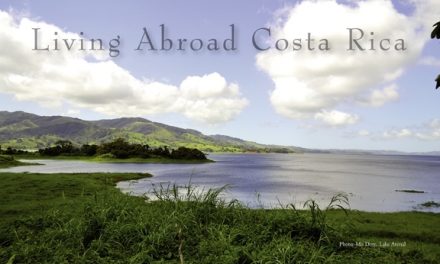Buenos Aires
Argentina’s Gateway City
Published in the Fall 2008 Issue of Canadian World Traveller
Text and photos by Nick Gosling (nick@traveltalkmedia.com)
Argentina’s capital city of Buenos Aires exudes a unique combo of the hip, the modern and the historical.
While the history and culture of Argentineans run deep here, as evidenced by the many museums and monuments located throughout this cosmopolitan city, the residents of Buenos Aires also heartily embrace the future, as witnessed by the many modern high-rises and new five-star hotels that dot the city’s skyline.
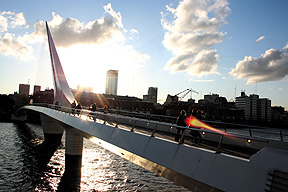 On Rio de la Plata
On Rio de la Plata
Situated on the shores of the legendary Rio de la Plata, Argentina’s exciting gateway city is well known for its strong European influences, beautiful architecture and lively, ultra-hip nightlife.
The best time to visit the city is from December to February, as these are pleasantly warm months of the southern hemisphere’s summer season.
Tango originated in Buenos Aires in the late 1800s. Visiting the following lively neighbourhoods that gave birth to this sultry and often erotic music and dance form would turn the most staid northern visitor into a passionate Latin lover!
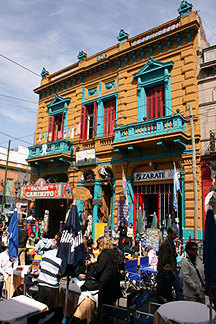 La Boca
La Boca
Colourful and touristy, this barrio of Buenos Aires is an abandoned port featuring brightly painted metal houses.
You’ll want to stroll down the district’s pedestrian street, the Caminito, and see a tango show or purchase some Argentinean leather goods or tango memorabilia from the many shops and outdoor vendors.
On game days, fans of the Boca Juniors, one of South America’s top football clubs, will be out in droves in La Boca.
As you explore the street, be sure to note the many plaques and monuments lining the Caminito that commemorate the history of the area.
San Telmo
Buenos Aires’ oldest neighborhood San Telmo is renowned for its beautiful historic churches, tango parlors, cafes and antique shops. Don’t miss the Feria de San Telmo, an outdoor antique fair that runs every Sunday from 10 a.m. to 4 p.m.
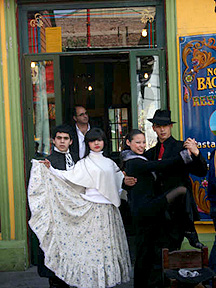 Florida Street & Santa Fe Avenue
Florida Street & Santa Fe Avenue
Shopping is aplenty along these pedestrian streets, as are the colourful cafes and eateries. The Galerias Pacifico shopping arcade, with its beautifully painted fresco ceiling, is located here.
Palermo
Hip, vibrant and historical, the barrio of Palermo and its subdivisions make up Buenos Aires’ largest neighborhood. You’ll find many shopping streets, a city park, the Buenos Aires Botanical Gardens and several interesting monuments in Palermo.
The subdivisions of Palermo Hollywood and Palermo Soho are world-renowned for their nightclubs and cafes, while Palermo Chico is a residential area featuring many of the city’s imposing upscale homes.
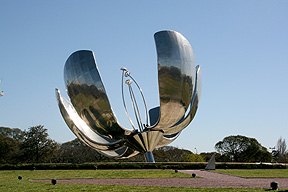 Recoleta
Recoleta
Popular for its parks, squares and cafes, the Recoleta has several historic and artistic sites that you won’t want to pass up. Recoleta Cemetery is located here, as is a statue dedicated to the legendary Eva Peron.
The mechanical art monument, the Floralis Generica, is located in the United Nations Park in Recoleta.
This massive but graceful metallic sculpture opens and closes its petals based on the amount of sun exposure. The Recoleta is also known for its galleries and outdoor markets.
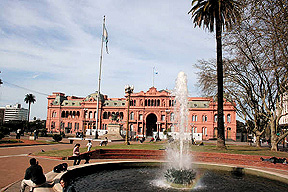 Some Notable City Sights
Some Notable City Sights
Casa Rosada: Seat of the executive branch of Argentina’s government.
The Obelisk: Buenos Aires monument built to commemorate the 400th anniversary of the first founding of the city.
Avenida 9 de Julio: Avenue named after Buenos Aires Independence Day (July 9, 1816).
The Cabildo: Public building used as a government house during the city’s colonial times.
La Recoleta Cemetery: Famous cemetery, which includes graves of several presidents, as well as that of Eva Peron.
Plaza de Mayo: The main square in Buenos Aires.
Palermo Gardens: Park located in the neighborhood of Palermo.
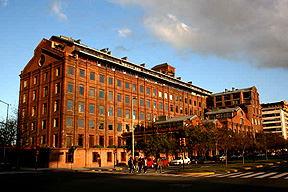
Staying in the City
The five-star Faena Hotel + Universe, located in the Puerto Madero district, is one of Buenos Aires’ finer hotels.
The Faena’s 108 rooms, which include 16 suites available for rent, combine elegant local styles with European tastes.
Situated in a historic seven-storey grain brick building, the hotel opened in 2004 was designed by Philippe Starck and is owned by Alan Faena.
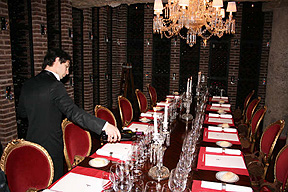 The “Universe” concept of the hotel comes from the idea that all the rooms, plus its poolbar, wine cellar, lounge, spa, boutique, Mercado, dining room and theater, make up the Faena Universe, where people staying at the hotel and visitors to the lounge, theater and Mercado can mix and mingle.
The “Universe” concept of the hotel comes from the idea that all the rooms, plus its poolbar, wine cellar, lounge, spa, boutique, Mercado, dining room and theater, make up the Faena Universe, where people staying at the hotel and visitors to the lounge, theater and Mercado can mix and mingle.
A Sweet Aroma
On entering, the Faena Hotel + Universe has a unique, palace-like feel as you’re left gazing down a spacious hallway, lavishly decorated with curtains and a long bench running through the center. Take a sniff of the air – a hotel staff member sprays perfume throughout the Faena each day.
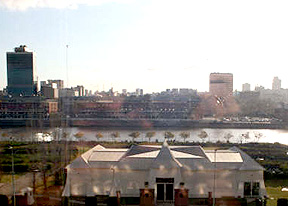 Each of the rooms has a view of either the city or the Rio de la Plata, the river that borders Buenos Aires.
Each of the rooms has a view of either the city or the Rio de la Plata, the river that borders Buenos Aires.
Done up in red and white décor, the guests rooms are modern with automatic velvet curtains and Venetian blinds, Egyptian cotton linens, a digital safety box and entertainment system.
I was impressed with the beautiful views of the city skyline I had from Room 414. Don’t forget to take a trip to the hotel’s marble-clad Hammam Spa, the only one in Argentine, where guests can enjoy a massage or other relaxing treatments.
The Mercado serves up great Argentine buffet breakfasts each morning. Rooms start at $400 a night, depending on the season, and go up from there. However, there are much more affordable accommodations in the city.
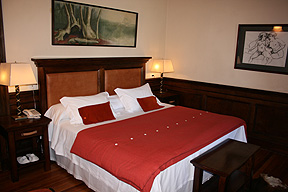
A Place in the Country
A two-hour trip outside of the city brought me toEstancia Bella Vista de Guerrero, a chateau-like hotel and working ranch located on the picturesque banks of the Salado River.
The Estancia’s 17 rooms have country furnishings, private bathrooms, Wi-Fi Internet and digital safes. Rooms range in prices from $155 to $205 for suites.
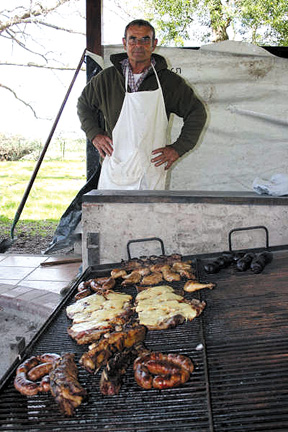 On the property, guests can participate in a wide range of activities, including fishing, tennis, cycling, or they can have their activities customized by the hotel staff to include partaking in daily farm activities and visiting local wineries.
On the property, guests can participate in a wide range of activities, including fishing, tennis, cycling, or they can have their activities customized by the hotel staff to include partaking in daily farm activities and visiting local wineries.
I sat down to a typical Argentinean meal with heaping mounds of beef, including chorizos (pork sausages), blood sausages and matambre (think pizza with flank steak instead of dough).
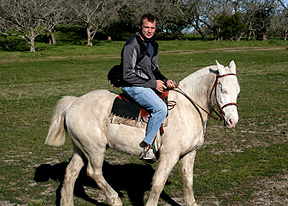
Afterwards it was time for a horseback ride, where a Gaucho (Argentinean cowboy) saddled up my horse.
A walk through the peaceful forest next to the Estancia completed my visit. A trip to the Tower Spa, where visitors can relish a hydro-massage or sauna bath, should also be included in a stay to the Estancia.
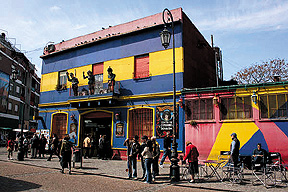 Getting There
Getting There
Buenos Aires has three international airports to choose from – the Jorge Newbery Airpark, the Ezeiza International Airport and the Comandante Espora Aero Station.
The busiest and largest of the three is the Ezeiza International Airport, located about 14 miles outside of the city.
American Airlines flies one daily, nonstop flight to Ezeiza from Chicago O’Hare Airport, Dallas/Fort Worth, Miami and New York’s JFK Airport. In December, the airline will begin offering a second daily nonstop flight from JFK, five days a week.
For Canadian travellers, Air Canada and LAN Airlines offer direct or connecting flights several times a week from Toronto to Buenos Aires.
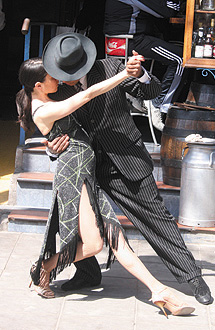 Two to Tango
Two to Tango
Buenos Aires is an unforgettable experience. If you’ve never been ‘Down Argentina Way’ you have no idea what you’re missing!
For More Info:
Argentina Tourism Board
Email: info@turismo.gov.ar.
Website: www.turismo.gov.ar
Embassy of Argentina
81 Metcalfe Street, Ottawa, ON K1P 6K7
Tel.: 613-236-2351
Email: embargentina@argentina-canada.net
Website: www.argentina-canada.net

